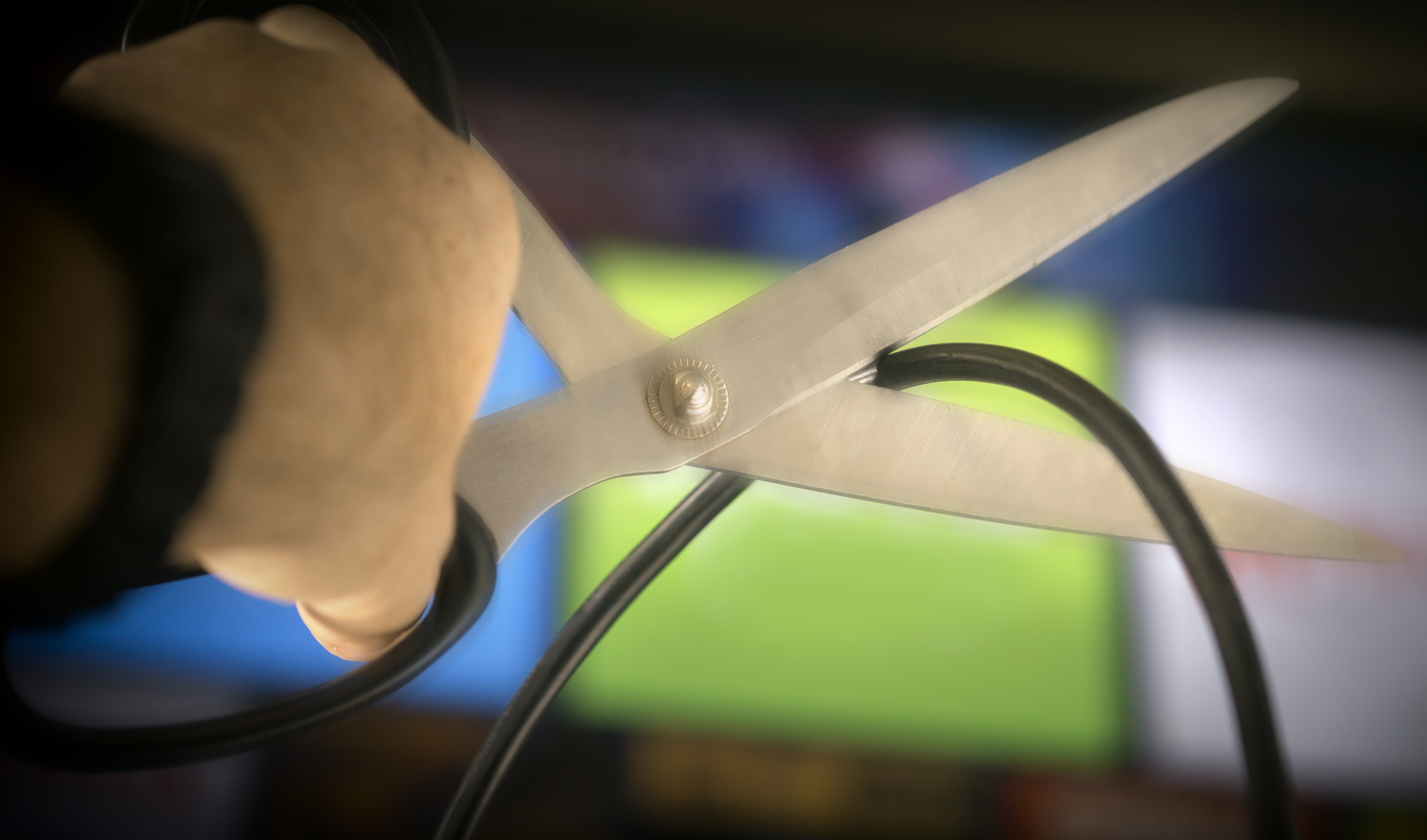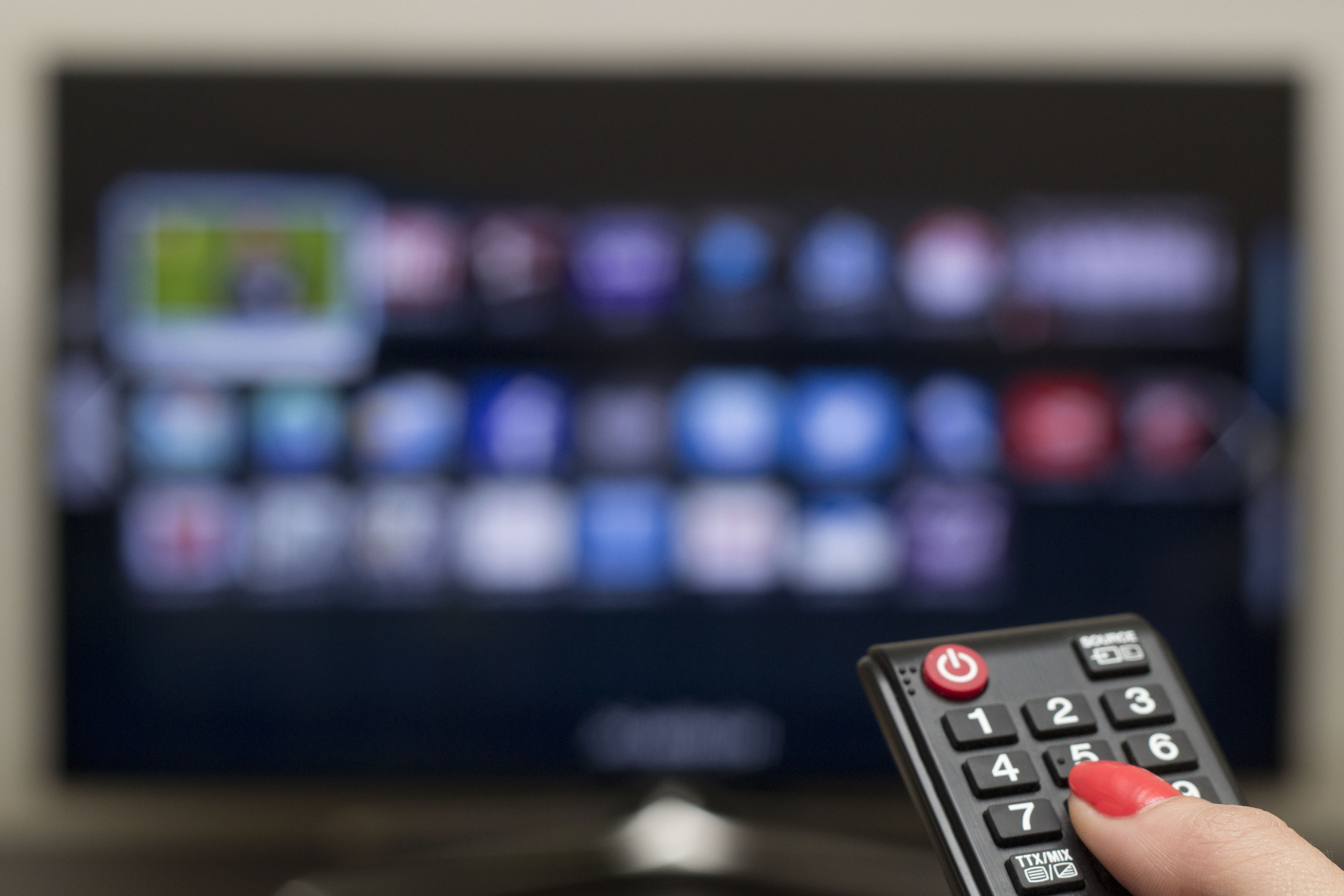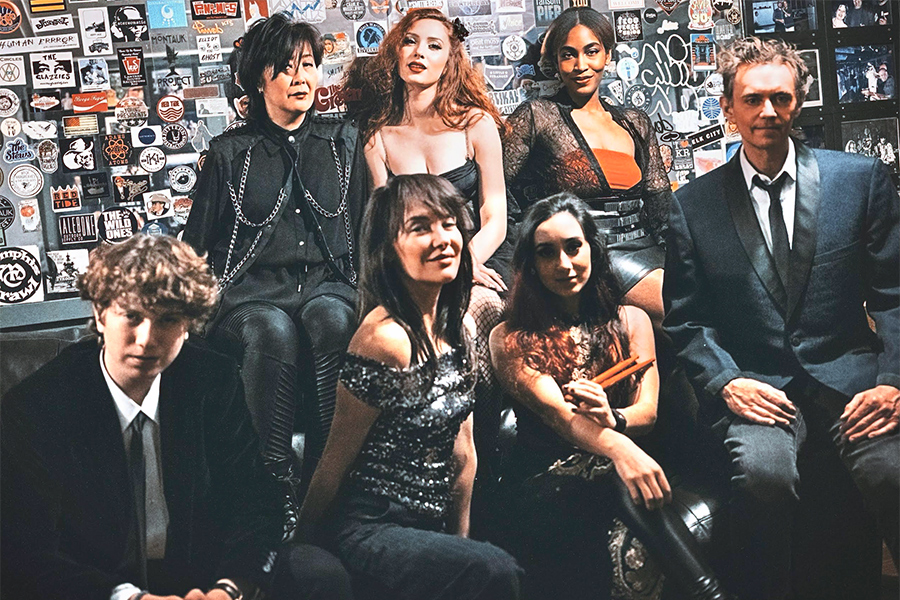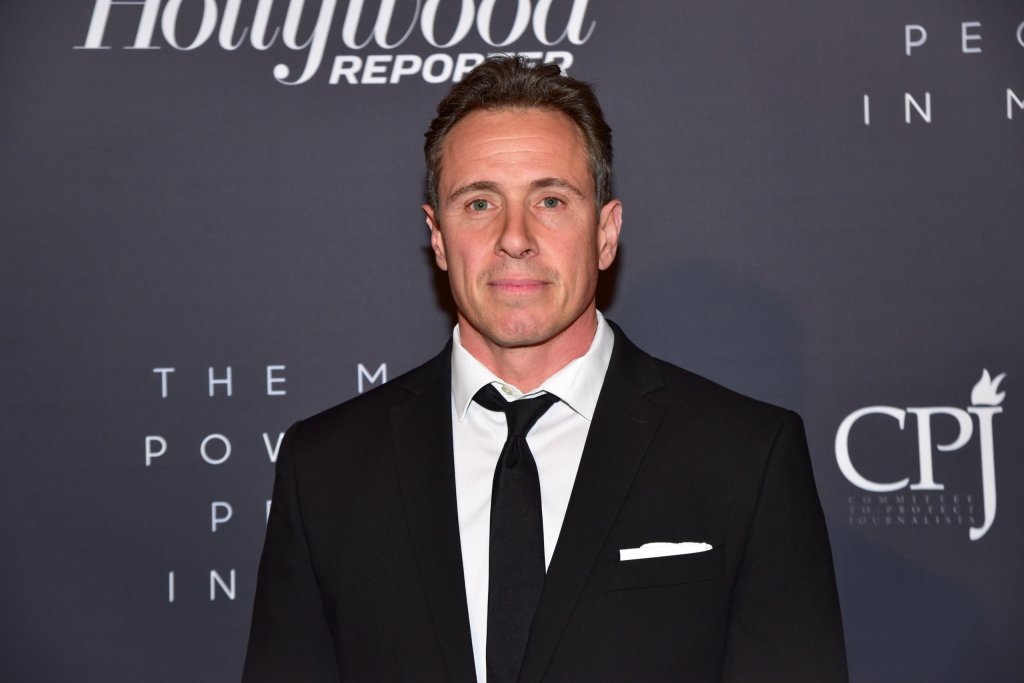Confessions of a Cable Cutter: East End Options Beyond Optimum

About three months ago, I cut the cord, happily jettisoning Optimum TV to join the ranks of the cable-less.
I have no regrets about my decision. Like a lot of East End homeowners, I’ve been itching to put Optimum in my rearview mirror for a long time.
While my reasons for wanting to end Optimum’s tyrannical reign over my program guide extended way beyond the exorbitant cost of the service, I can report that if you do decide to take the cord-cutting plunge, you’ll probably save some money.
But, as I’ll explain, there are a few important caveats, particularly for New York sports fans and rabid channel surfers. Plus, the cost-savings calculus for cord cutters shifts dramatically in your favor if you’re lucky enough to own more than one home.
You should also know that there’s a bit of wiggle room on price these days. Even if you’re only thinking about waving goodbye to your favorite cable monopoly, a quick phone call to them is probably worth your time.
When I made my break-up call to Optimum, my sales rep offered a way-too-little, way-too-late attempt to keep me as a subscriber. If I stuck around, I could bask in the glow of a $20 reduction off my bill, which, after Optimum’s latest price increase, had climbed to $295 per month, including TV and internet service. I politely declined, and we closed out the TV portion of my account.
I had finally thrown off the yoke of Optimum cable — but not completely.
Wi-Fi, Wherefore Art Thou?
While I no longer pay Optimum for TV service, the company is still collecting its pound of flesh from me. I now pay exactly $88.03 every month for internet access.
A couple of months after canceling my cable TV, I called Optimum and asked for a reduced rate on my internet service, hinting that I had found another provider to replace them (I hadn’t). Though the company has shown a wee bit of flexibility lately on TV pricing, my rep (and subsequently, her supervisor) informed me that there was nothing they could do about my Wi-Fi bill.
I was highly motivated to discover otherwise, but after extensive research, I believe that Optimum remains the best option for internet service on the East End, even when you take its hefty price tag into account.
Mobile providers such as Verizon, AT&T and T-Mobile offer high-speed home internet in various parts of the country, but not in the Town of Southampton where I live, nor in any of its surrounding areas. National satellite providers DirectTV and Dish Network have TV packages that compete with Optimum and other services, but they don’t offer internet and Wi-Fi directly via their systems. Instead, they partner with local internet providers, which as noted, are few and far between on the East End.
If you’re hellbent on finding a better internet option than Optimum, it’s worth a few minutes of your time to query the big providers listed above about service in your area. Just don’t be surprised if you ultimately come to the conclusion that, as of summer 2023, Optimum is still your best call for broadband.
At some point, Verizon Fios or another decent internet service will probably become available in at least some East End locations. But for now, Optimum has us all by the short hairs on the Wi-Fi side of things.
When it comes to TV service, however, things have changed.

NY Sports Fans: Beware of Cutting the Cable Cord
After saying sayonara to Optimum TV, I’ve been a paying subscriber to two leading national non-cable programming providers: I started with YouTube TV and then switched to Hulu + Live TV. As it stands today, those two providers are pretty much the Coke and Pepsi of the cord-cutting world. Sling TV, DirecTV and Dish Network (with no satellite dish required) and a few other lesser known services also offer decent slates of cable-free local and basic channels.
Services like YouTube TV and Hulu + take a less-is-more approach. For $65–$85 per month, both companies provide every non-premium channel my family and I would ever care to watch. In addition to all the local NY stations (ABC, NBC, CBS, Fox, etc.) and cable news (CNN, MSNBC, Fox News Channel, CNBC, etc.), you get stuff like Comedy Central, FX, TBS, The History Channel, ESPN and many more.
What you don’t get are the hundreds of superfluous cable channels that Optimum and other big cable companies throw into the mix — channels that function as little more than window dressing for most viewers.
If you’re thinking about cutting the cord, it’s a simple matter to jump on any of the abovementioned provider’s websites and punch in your ZIP code to get a full list of the channels offered in your area. See which channels you can live without — or which might be a dealbreaker for you if they aren’t in the lineup.
When it comes to dealbreakers, serious NY sports fans may find that leaving Optimum TV simply isn’t worth it. Let’s use the four “major” sports as examples.
On the football side of things, Giants and Jets fans don’t stand to lose any programming if they cut their cable. The vast majority of games (playoffs and regular season) will still be available on local and national TV networks, and ESPN. In fact, YouTube TV now offers NFL Sunday Ticket, which lets you pay a premium, albeit a hefty one, for all NFL games on any given Sunday (or Monday or Thursday).
But regular-season baseball, basketball and hockey are another story entirely. For example, other than the occasional game on local TV, ESPN and Apple TV, the vast majority of regular-season Mets games are on SNY, a proprietary network which is also available as a standalone app.
Ditto for the Yankees, whose primary regular season home is the YES Network (which is also the primary home of the Brooklyn Nets). During the regular season, the Knicks are almost always on MSG, and the Rangers, Islanders and Devils are usually found on a combination of MSG and ESPN.
Here’s the problem: Neither YES nor MSG is available as part of the standard channel package offered by either Hulu + or YouTube TV. Until recently, SNY was available on both YouTube TV and Hulu +. But YouTube TV dropped SNY from its channel lineup as of June 30. (The end of YouTube TV’s relationship with SNY is what precipitated my switch to Hulu +. My daughters and I are tortured Mets fans.)
If you part ways with Optimum TV and you want to watch most Yankees, Knicks, Nets or Rangers games, you’re going to have to jump through a few hoops and pony up some extra cash. You can expect to pay at least $30 per month for MSG and/or YES in addition to your main TV service bill — or double that if you bundle the sports networks with other services.
And YES in particular, isn’t yet available as a standalone network without a TV provider for a flat fee, so you’ll have to bundle it with DirecTV Stream, one of the few non-cable providers that carries it. If the whole thing sounds annoyingly complicated, that’s because it is.
The Big Switcheroo
I think the best way to illustrate the bigger cord-cutting picture is to use my family’s personal situation as an example.
We have two homes, one in Manhattan and one in Hampton Bays. Our Hamptons place is much more than a vacation home. These days, my family and I spend more total time on the East End than we do in the city (a fact I happily report to the IRS every April). Like a lot of our contemporaries, we subscribe to HBO (now known as Max), Showtime, Netflix, Apple TV+, Hulu, Prime Video and a few other premium services.
I’m currently paying $170 per month for Spectrum cable and internet in Manhattan, including HBO and Showtime. That number is $125 lower than what I used to pay Optimum for almost identical service.
The reason is simple: Unlike Optimum’s situation on the East End, Spectrum does not have a monopoly on cable service in Manhattan. For over two decades, I’ve been switching from Spectrum to RCN (now doing business as Astound) and back every three or four years in my city apartment.
By doing so, I counteract the inevitable price increases levied by whichever company I’m using at the time while taking advantage of introductory promotional pricing by the company I’m switching back to.
By replacing Optimum TV with Hulu + Live TV, I’ve netted a savings of over $135 per month on my combined cable/internet bills in both my homes. Including internet service, HBO and Showtime (but excluding all other premium TV apps), I formerly paid $295 to Optimum in the Hamptons and $170 to Spectrum in Manhattan, for a total monthly bill of $465 in both homes.
After the switch, I now pay Optimum $88 for internet service in the Hamptons; I pay Hulu + $70 for live TV in the Hamptons; and I continue to pay Spectrum $170 for live TV and internet in Manhattan.
Total current cost: $328, which means that I’m saving $137 per month.
Paying a cable provider in one home while cutting the cord in the other gives me a number of key benefits. Take the sports network situation. I’m not a big Knicks or Rangers fan, but my family and I like to check in on them once in a while. Same goes for the Yankees. Since Hulu + doesn’t offer MSG or YES, if I wanted to catch a game, I’d be out of luck at my East End home — unless I was willing to pay a big premium for both networks.
But since I’ve downloaded the network apps and can sign into them for free with my Manhattan cable provider (Spectrum), I’m able to watch the Yankees, Knicks or Rangers for no additional charge at both of my homes.
Same goes for YouTube TV or Hulu + and premium channels like HBO and Showtime. Their apps work just like Prime, Netflix or Apple TV+, meaning that since I pay for them once, I can watch them for no additional charge on all of the devices in both of my homes.
And my family members can access the services on their phones, tablets and laptops as well.
Programming choices and cost savings aside, there’s one more aspect to cord-cutting that’s worth mentioning: In only a few months, the way I watch TV has changed completely. And several of my cableless friends have reported similar experiences.
Like most premium cable subscribers, I had access to multiple versions of HBO, Showtime, Cinemax, etc., as well as a zillion basic cable channels. I’d be sitting there on my couch and the last 20 minutes of Wim Wenders’ Wings of Desire would pop up.
Or maybe it would be the egg-eating scene from Cool Hand Luke; or the “say my name” scene from Breaking Bad; or Uma’s overdose scene from Pulp Fiction. As a film and “prestige TV” geek, I just couldn’t pass those scenes up — nor could I pass up the many hundreds of other snippets and great scenes that magically presented themselves for my viewing pleasure.
But that kind of channel-surfing is fast becoming an anachronism.
The TV viewing experience isn’t really about surfing anymore. The practice of watching only portions of films and shows is fading fast.
Today, even in traditional cable TV systems, all the premium apps are spread out in their own closed-end miniverses. You have to click through multiple screens to find the good stuff. And Hulu + and YouTube TV’s program guides are much less conducive to random surfing. There’s too much of a lag time when you call up the guides, and each new channel you select loads onto the screen just slowly enough to be annoying.
These days, whether I’m alone or with my family, we generally just pick something and watch it from beginning to end. Sure, we tend to suffer from paralysis by analysis due to the never ending bevy of programming options available to us.
We also engage in epic battles over what to watch. But we still manage to see a lot more quality stuff than we used to. We’ve even caught up on a whole bevy of foreign films we’ve been meaning to get to for years. How can you argue that that’s not a good thing?
I’m thrilled to have cut most of my ties with Optimum — and I know I’m saving money every month. Still, I sometimes find myself waxing nostalgic about old-school channel surfing. But you can’t stop the inexorable march of technology. I don’t intend to try.



